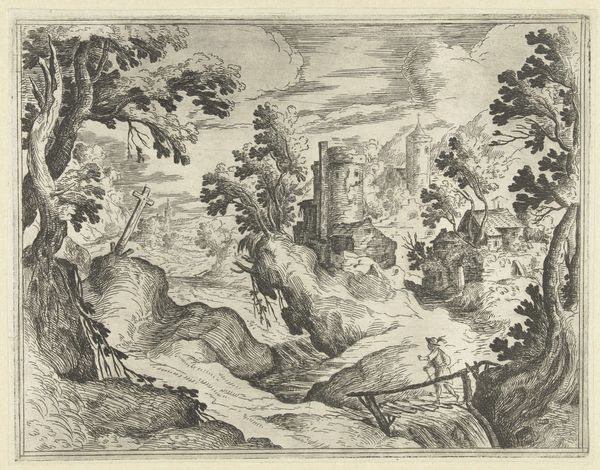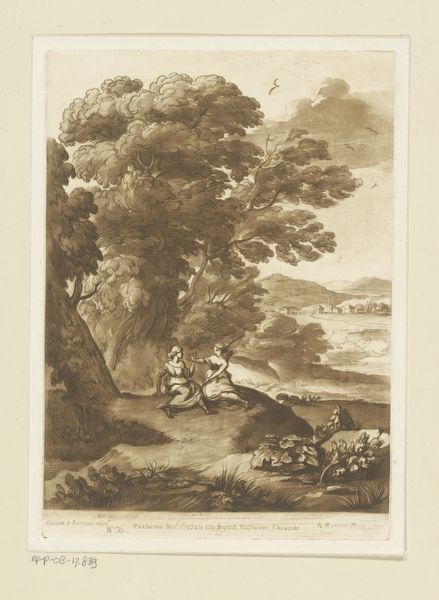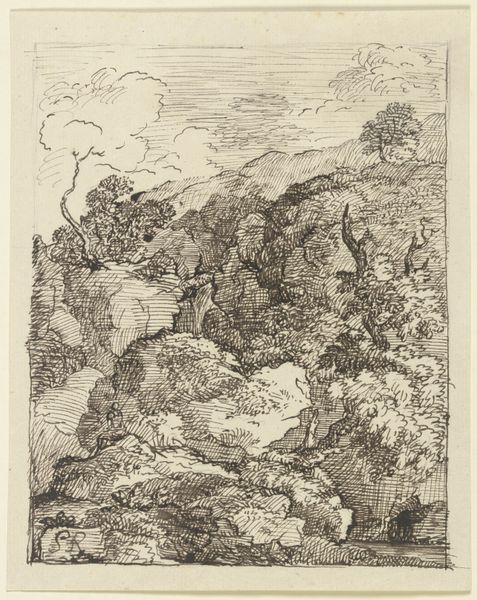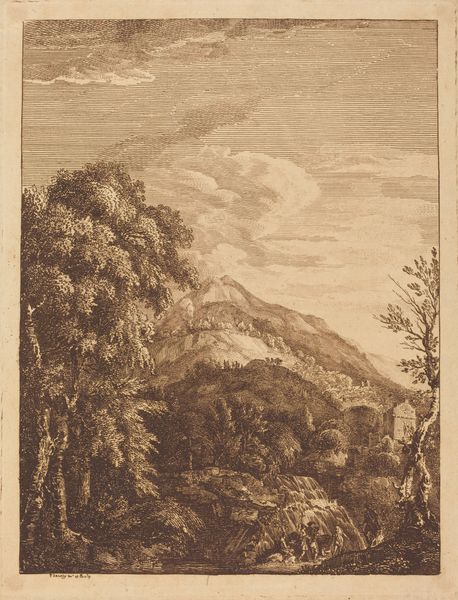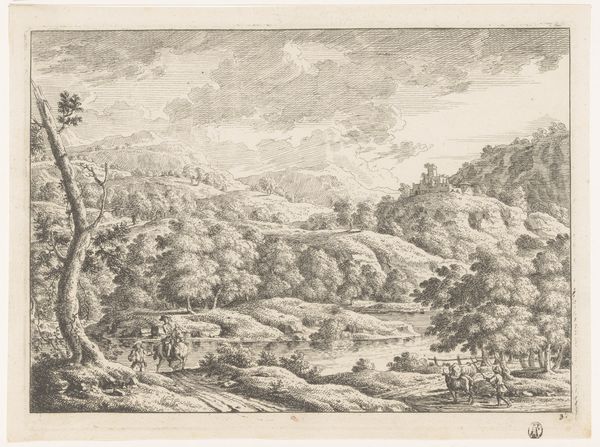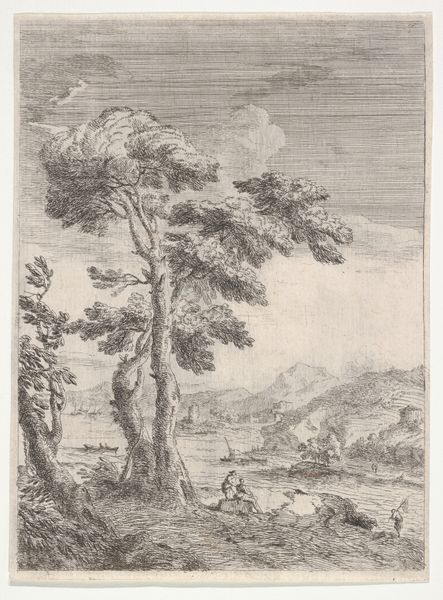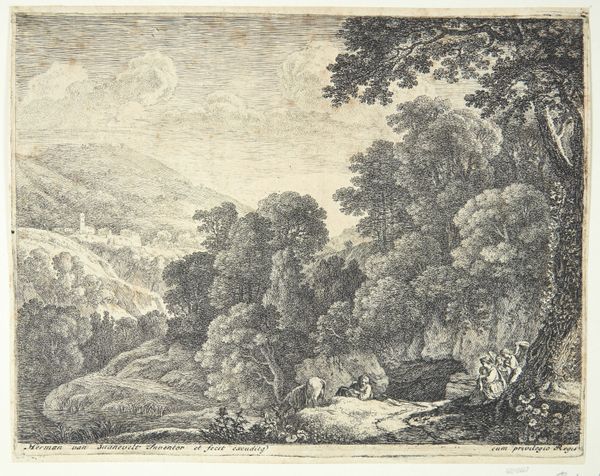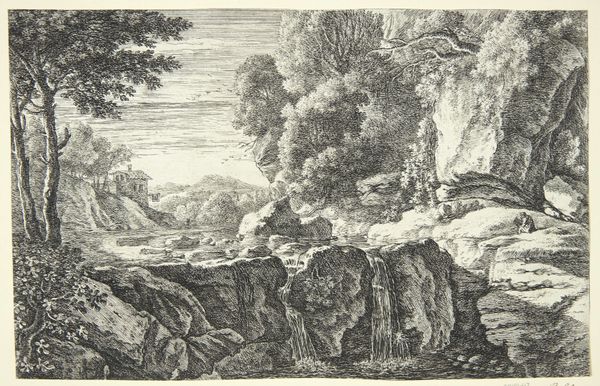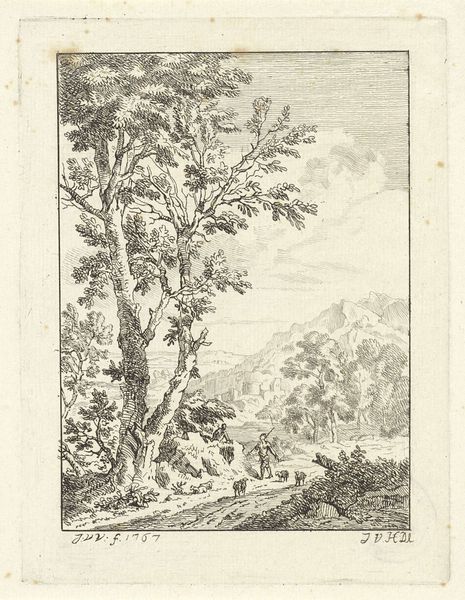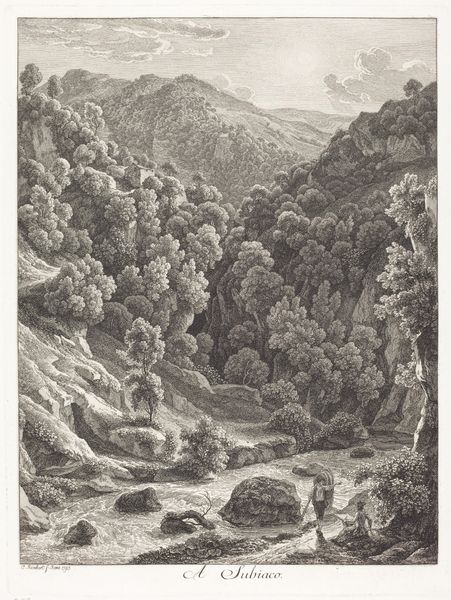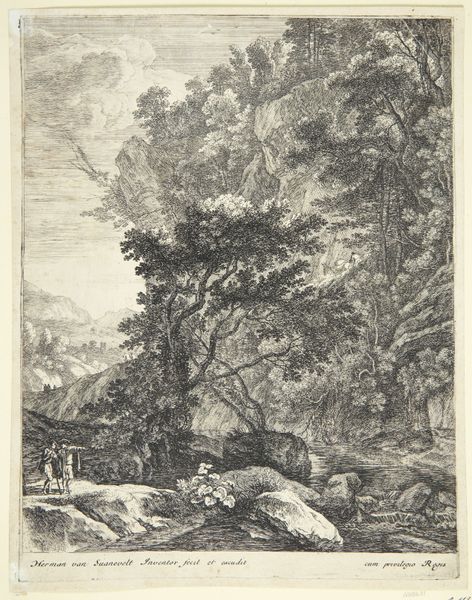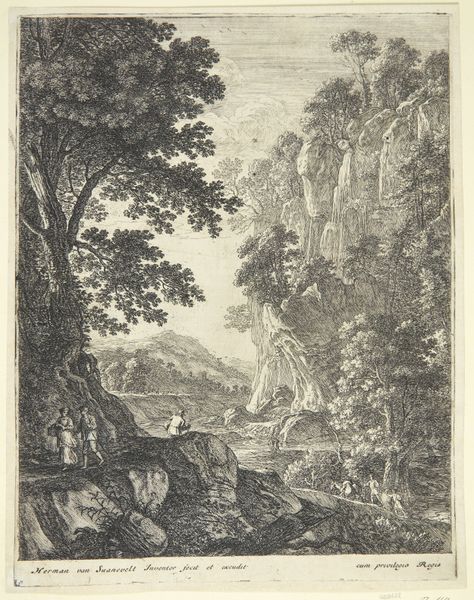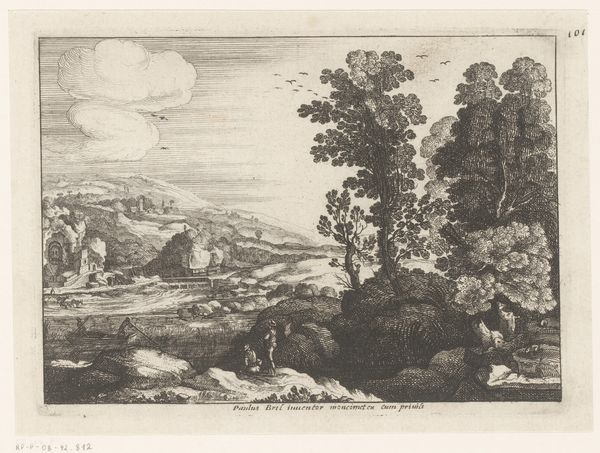
drawing, print, etching, ink
#
drawing
#
baroque
# print
#
etching
#
landscape
#
etching
#
ink
Dimensions: 296 mm (height) x 215 mm (width) (plademaal)
Curator: Welcome. Before us hangs Albert Meyering’s "Landskab med et vandfald", which translates to "Landscape with a Waterfall." This artwork, created sometime between 1645 and 1714, is rendered in etching, a type of printmaking. Editor: The meticulous detailing immediately strikes me. Notice the textures--the density of the trees versus the delicate rendering of the waterfall. It's masterful in its control of line. Curator: Meyering, situated within the Baroque period, clearly engages with established landscape traditions. Consider, though, that printmaking during this era played a vital role in disseminating imagery. How might its availability shift understandings of art? Editor: Yes, the structural elements guide the eye effectively--the winding watercourse, the arrangement of light and shadow. However, I would focus attention on how this contributes to the work's serene and romantic atmosphere. It’s about formal relations achieving affective potential. Curator: I appreciate your emphasis on affect, however it is important to also consider the economic implications related to printing. Also consider the kind of labor and workshops involved in its reproduction. Printmaking brought art to a wider audience but under what specific conditions? Editor: Certainly, that socio-economic context is important, and can be linked directly to formal structures. How the landscape traditions here are accessible precisely due to its distribution! The material supports and echoes this diffusion. Curator: Perhaps we’re in agreement then, that an understanding of Meyering’s print relies upon acknowledging not only its visual attributes but its production and subsequent circulation within a specific historical milieu. Editor: Indeed. These qualities provide essential clues for unlocking both the aesthetic qualities, its history, and its conceptual intent. It all comes down to the layers of the work, intertwined.
Comments
No comments
Be the first to comment and join the conversation on the ultimate creative platform.
